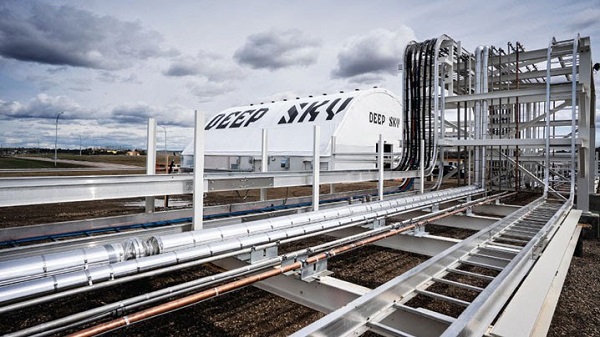Agriculture
The Enemies of Food Freedom

From the Brownstone Institute
By
In every war, there is necessarily an enemy force, and the war on our food supply is no exception.
My previous article addressed the ongoing attacks on farmers across the globe. In today’s article, we will look at some of the culprits behind this agenda. For anyone who delved into the entities behind the tyrannical Covid policies, many names on the list below will seem quite familiar.
Bayer/Monsanto
Bayer merged with Monsanto in 2018, combining the companies responsible for Agent Orange and pioneering chemical warfare. In 1999, Monsanto’s CEO Robert Shapiro bragged that the company planned to control “three of the largest industries in the world—agriculture, food, and health—that now operate as separate businesses. But there are a set of changes that will lead to their integration.” Today these chemical manufacturers control a huge percentage of the world’s food supply.
Cargill and the US Department of Agriculture (USDA)
Cargill is a World Economic Forum partner and the largest private company in the United States. This behemoth monopolizes unimaginably vast swaths of the global food industry, including meat processing in the United States. Cargill’s business practices, along with bigger-is-better policies enforced by their cronies at the United States Department of Agriculture, have led to the closures of many local abattoirs which forced farmers to depend on a few corporate mega-slaughterhouses. This leaves farmers waiting 14 months or longer for butchering slots, for which they often must transport their animals hundreds of miles—indeed, farmers and ranchers must book processing dates up to a year before the animal is even born. The high fees charged by Cargill’s slaughterhouses contribute to the skyrocketing price of meat—all while the farmers themselves are barely paid enough to cover the cost of raising the livestock. The USDA, meanwhile, makes sure their policies prevent farmers from processing meat themselves on their own farms.
Wellcome Trust
The Wellcome Trust, the former owner of Glaxo before it merged with SmithKline, played a major role in Britain’s Covid debacle and is unapologetic about its goal of reducing your food sovereignty. Wellcome Trust funds Livestock, Environment and People (LEAP), an organization dedicated to developing and testing behavioral modifications to coerce the public into removing meat and dairy from their diets. LEAP’s co-director Susan Jeffs bemoans that motivating people with environmental impact labels on their foods does not seem to work: “People are already settled into very established habits” and suggests instead altering what the industry provides, thereby forcing consumer choice. Wellcome Trust researchers recommend “availability interventions” that “rely less on individual agency” to reduce access to animal food products. Researcher Rachel Pechey opines that “meat taxes show a promising evidence for effectiveness but have been less acceptable in survey work…we don’t want to just go for the most acceptable [solutions].”
The World Health Organization
Dr. Tedros Adhanom Ghebreyesus, the WHO’s Director-General, would like you to believe that food production is responsible for almost one-third of the global burden of disease. He calls for transforming the global food system toward plant-based foods, reducing meat and dairy in our intake, and enforcing policies to save the climate through restricting diet. A WHO 2022 report concluded that “considerable evidence supports shifting populations towards healthful plant-based diets that reduce or eliminate intake of animal products.”
World Economic Forum
You are likely familiar with the World Economic Forum and their Great Reset agenda. Visit their webpage and treat yourself to such morsels as 5 reasons why eating insects could reduce climate change, why we need to give insects the role they deserve in our food systems, and why we might be eating insects soon. Suffice it to say that their plans for your dietary future are clear.
EAT Forum, the Lancet, and their Big Tech and Big Chemical Partners
The EAT Forum is “dedicated to transforming our global food system through sound science, impatient disruption and novel partnerships.” It was co-founded by the aforementioned Wellcome Trust, the Strawberry Foundation, and the Stockholm Resilience Centre. Their FRESH initiative—Food Reform for Sustainability and Health—aims to transform the global food system. Partners in the FRESH initiative include Google, Cargill, Syngenta, Unilever, Pepsico, and many chemical processors such as BASF, Bayer, and DuPont—a rather odd cast of characters for developing a healthy and sustainable dietary plan. EAT’s Shifting Urban Diets Initiative advocates for cities to adopt the Lancet-endorsed Planetary Health Diet, in which plant-based proteins are set to replace meat and dairy. Red meat is limited to 30 calories per day. A report drafted by EAT found that the transformation they want to foist upon our diets is “unlikely to be successful if left up to the individual,” and “require(s) reframing at the systemic level with hard policy interventions that include laws, fiscal measures, subsidies and penalties, trade reconfiguration and other economic and structural measures.”
The Rockefeller Foundation
Members of the Rockefeller family may carry more blame than anyone else in history for turning agriculture away from independent family farms towards corporate conglomerates.
In 1947, Nelson Rockefeller founded the International Basic Economy Corporation to modernize and corporatize agriculture in South America, particularly in Brazil and Venezuela. IBEC transformed farming to depend on expensive machinery and inputs that priced subsistence peasant farmers out of viability. The American International Association for Economic and Social Development (AIA), a Rockefeller-funded philanthropic organization, helped build the market through which IBEC could enrich its owners. While IBEC’s promotional literature claimed that the company was generously assisting the Third World by providing necessary consumer products while turning a profit, on closer examination, it was simply a business enterprise built on the Rockefellers’ old Standard Oil model, in which smaller competitors are forced out using monopolistic practices before prices are raised.
This tactic was taken to a whole new level with the so-called Green Revolution, first in Mexico in the 1940s, then in the Philippines and India in the 1960s, as well as in the United States. Traditional farming practices such as the use of manure as fertilizer for heirloom native crops were replaced with a model of mechanized chemical farming, using Rockefeller-funded new seed varieties which had been developed to require petrochemical fertilizers and pesticides to produce significantly increased crop yields compared to the traditional crops grown by peasant farmers in these countries.
It is worth noting that the Rockefellers, as oil oligarchs, stood to profit handsomely from the petroleum-based fertilizers and pesticides that this new method demanded. The crops grown were almost all cereal crops like rice and replaced more nutrient-dense, traditional crops like millet. India experienced an increase in food but a decrease in nutrition: with more empty calories but fewer fruits, vegetables, and animal proteins, micronutrients disappeared from the diet. Anemia, blindness, fertility problems, low birth weight, and immune impairment increased.
While the Green Revolution was hailed as the solution to world hunger and poverty, it also poisoned local water supplies, depleted the soil, and left farmers drowning in debt as they could no longer independently produce the fertilizer and seeds they needed. Informed readers can see how the later Monsanto GMO Roundup-Ready seed model followed this playbook established by the Rockefellers.
In 2006, the Rockefeller Foundation, Bill Gates, and others pushed the Alliance for a Green Revolution in Africa, or AGRA, and they again followed this proven playbook. Since AGRA’s launch, African biodiversity has been lost, and the number of severely undernourished people in sub-Saharan Africa has increased by nearly 50 percent, even by the UN’s own reports. Just as in India, farmers are being tricked into abandoning nutrient-dense, drought-resistant crops like heirloom millet in exchange for the empty calories of GMO corn. Hundreds of African organizations have demanded that this neocolonial project end, leaving the future of African agriculture in the hands of the native farmers who know the land best.
Now the Rockefeller Foundation has set its sights on the US food system with its Reset the Table agenda, handily launched in 2020 just weeks after the Great Reset was announced. Under rosy language calling for inclusivity and equity, the report states that “success will require numerous changes to policies, practices, and norms.” This includes a major focus on data collection and objectives that align closely with the One Health Agenda—more on that in a future article.
Bill Gates and the Gates Foundation
Bill Gates has followed the Rockefeller playbook for fumigating his fortune and transforming his image—while building more wealth—through the cynical ploy of philanthrocapitalism.
His fingers are deep in every public health pie, and his influence is nearly equal in the food wars. Besides financing the development of fake meats, he is behind the aforementioned AGRA program, is investing in geoengineering programs to dim the sun, and as of January 2021, owned 242,000 acres of prime US farmland, making him the largest private owner of farmland in the US. It is disconcerting to think that a man who believes we should phase out real meat controls so much of the method of production.
USAID and BIFAD
Another organization pushing you to eat bugs is USAID. This may surprise some of you who think of USAID as an organization dedicated to helping third-world countries, rather than as a longtime Trojan horse for CIA operations. (Skeptical of that claim? Go down the rabbit hole here and here and here and here.) Their Board for International Food and Agricultural Development, known as BIFAD, released a report titled “Systemic Solutions for Climate Change Adaptation and Mitigation.” This report calls for a complete transformation of the food supply and global agriculture. They propose to do this through ESG scores, carbon tracking, and eating insects.
So how do these organizations manage to push their agenda on the global population? We will cover that in a future article.
Agriculture
Unstung Heroes: Canada’s Honey Bees are not Disappearing – They’re Thriving
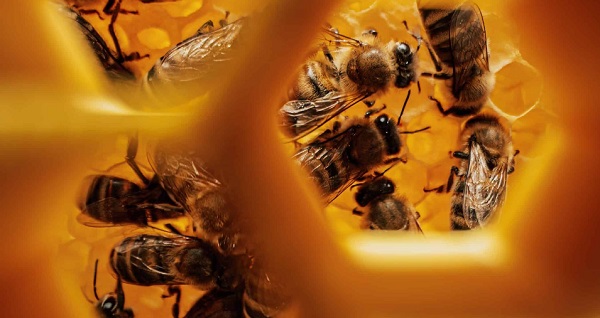
Canada’s Bee Apocalypse began in 2008. That was the year the Canadian Association of Professional Apiculturists (CAPA) first reported unusually high rates of winter bee colony losses. At 35 percent, the winter die-off that year was more than twice the normal 15 percent rate of attrition.
“Successive annual losses at [these] levels … are unsustainable by Canadian beekeepers,” the CAPA warned. This set off an avalanche of dire media reports that now appear on a regular basis. Among the many examples over the years: Huge Honey Bee Losses Across Canada” and “Canada’s bee colonies see worst loss in 20 years”. As each of these stories reminds readers, the disappearance of honey bees will doom our food supply, given their crucial role in pollinating crops including canola, soyabeans, apples, tomatoes and berries.
This year the black-and-yellow striped Cassandras are back at work, with headlines shouting “Scientists warn of severe honeybee losses in 2025” and “The Bees are Disappearing Again”. If it’s spring, the bees must be disappearing. Again.
It is, however, mathematically impossible for any species to be in an allegedly continuous and calamitous state of decline over nearly two decades and never actually reduce in number. For despite the steady supply of grave warnings regarding their imminent collapse, Canada’s bees are actually buzzing with life.
In 2007, according to Statistics Canada, there were 589,000 honey bee colonies in Canada,; in 2024, they reached 829,000, just shy of 2021’s all-time high of 834,000. Figuring a conservative summertime average of 50,000 bees per colony, that means there are approximately 12 billion more honey bees in Canada today than when the Bee Apocalypse first hit.
As for beekeepers, their numbers have also been growing steadily, and now stand at 15,430 – the most recorded since 1988. As CAPA’s report acknowledges, “the Canadian beekeeping industry has been resilient and able to grow, as proven by the overall increase in the number of bee colonies since 2007 despite the difficulties faced every winter.”
How is this possible? As is usually the case where there’s a need to be filled, the market holds the answer.
It is true that Canadian honey bees face a long list of threats and challenges ranging from mites and viruses to Canada’s harsh winters. It is also true that they perform a crucial service in pollinating crops, the value of which is estimated at $7 billion annually. However, this underscores the fact that bees are a livestock bred for a particular agricultural purpose, no different from cattle, chickens or pen-raised salmon. They are a business.
And in spite of its alleged status as an environmental totem, the honey bee isn’t even native to North America. It was first imported by European settlers for its honey-making abilities in the 1600s. Since then, it has been cultivated with deliberate commercial intent – allowing it to outcompete native pollinators such as bumble bees and butterflies even though it is poorly suited to the local winter. (This highlights the irony of all those native-plant pollinator gardens virtuously installed in neighbourhoods across Canada that end up supporting an invasive honey bee population.)
The significance of the bee economy means that when a beehive collapses over the winter for whatever reason, beekeepers have plenty of motivation to regenerate that colony as swiftly as possible. While hives can create their own queens over time, this can be a slow process given the cold Canadian climate. The better option is to simply buy a new queen from a warmer country.
In 2024, Canada imported 300,000 queens worth $12 million, mostly from the U.S., Italy, Australia and Chile. That works out to $40 each. In a miracle of nature, each of these new queens can lay up to 2,500 eggs a day, and each egg takes just two to three weeks to reach full maturity as a worker or drone. It is also possible to import entire “bee packages” that include a queen and 8,000 to 10,000 bees.
As a result, even a devastating 50 percent winter loss rate, something that has occurred only rarely in Canada in individual provinces and never nationally, isn’t necessarily fatal to any beekeeping operation. The beekeeper can purchase imported queens in April, split their existing colonies and be back in business by May or June.
And regardless of the honey bee’s apparent difficulties with Canada’s unforgiving weather (efforts are ongoing to breed a hardier Canadian variant), there’s no shortage of bees worldwide. Earlier this year, the German statistical agency reported the global beehive count rose from 69 million in 1990 to 102 million in 2023. Another study looking back to 1961 by New Zealand researchers found the number of honey bee colonies has “nearly doubled” over this time, while honey production has “almost tripled.” As the New Zealand report observes, “Headlines of honey bee colony losses have given an
impression of large-scale global decline of the bee population that endangers beekeeping, and that the world is on the verge of mass starvation.” Such claims, the authors note, are “somewhat inaccurate.” In truth, things have never been better for bees around the world.
Here in Canada, the ability to import queens from other countries, together with their prodigious reproductive capabilities, backstops the amazing resiliency of the bee industry. Yes, bees die. Sometimes in large numbers. But – and this is the bit the headlines always ignore – they come back. Because the market needs them to come back.
If there is a real threat to Canada’s bee population, it’s not environmental. It’s the risk that unencumbered trade in bees might somehow be disrupted by tariffs or similar bone-headed human interventions. Left on their own, bees have no problem keeping busy.
The longer, original version of this story first appeared at C2CJournal.ca
Agriculture
Canada Greenlights Mass Culling of 400 Research Ostriches Despite Full Recovery from Bird Flu Months Ago
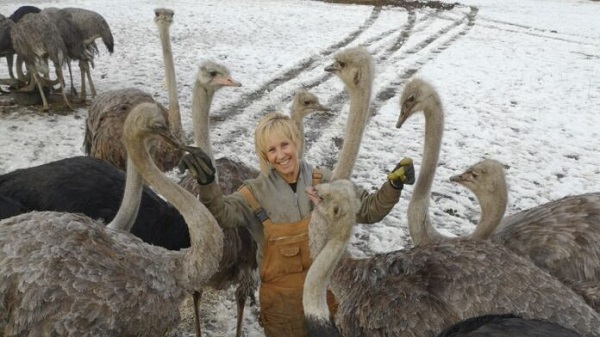
 Nicolas Hulscher, MPH
Nicolas Hulscher, MPH
Federal court upholds CFIA’s reckless cull order—setting a dangerous precedent for the unscientific mass depopulation of genetically important animals.
In March, I interviewed Katie Pasitney of Universal Ostrich and Connie Shields to discuss the alarming implications of the Canadian Food Inspection Agency (CFIA) order to cull 400 research ostriches at Universal Ostrich Farm in British Columbia over bird flu:
Canada Orders Mass Culling of 400 Research Ostriches Over Bird Flu, Refuses to Test Surviving Birds for Natural Immunity
·The Canadian Food Inspection Agency (CFIA) has ordered the culling of 400 ostriches at Universal Ostrich Farm in British Columbia, citing concerns over H5N1 bird flu. However, this decision is not based on sound science and could have serious consequences for both food security and medical research.
Universal Ostrich Farm is a research facility focused on studying the unique antibody-producing capabilities of ostriches. Their research has demonstrated potential in neutralizing viruses, bacteria, and even COVID-19, making it an important contribution to medical science.
In December 2024, the CFIA claimed that two deceased ostriches—which had been lying outside for over 16 hours—tested positive for H5N1 via PCR testing. Just 41 minutes after receiving these results, the CFIA signed an order to cull the entire flock.
The CFIA initially granted the farm an exemption, recognizing the birds as “genetically important.” Later, without clear justification, they reversed this decision, ordering their destruction.
Despite the importance of this research, the CFIA has refused to conduct further testing on the birds and has banned the farm from conducting its own tests, under threat of heavy fines and possible imprisonment. Why is the Canadian government refusing to study the potential antibodies ostriches have developed against H5N1 bird flu?
On January 31, 2025, a court granted a temporary stay of execution, halting the cull. However, the CFIA is appealing this decision, which means the culling could still proceed.
Today, we have received news that the reckless mass cull order will proceed despite their ostriches having already recovered months ago and developed natural immunity against H5N1:

Official Announcement: Federal Court Decision in Universal Ostrich Farms Inc. v. Canadian Food Inspection Agency
Dear friends and supporters,
We are absolutely devastated to share today’s Federal Court decision, issued on May 13, 2025. The court ruled in favour of the Canadian Food Inspection Agency (CFIA), upholding their order to destroy our beloved ostriches and rejecting our plea to save them.
The court’s decision accepted the CFIA’s justification under the Health of Animals Act and their use of the Stamping-Out Policy, which mandates the destruction of animals to control disease outbreaks, regardless of their health status. The court confirmed the CFIA’s approach, prioritizing trade obligations over the welfare of our animals.
In addition, we’ve been ordered to pay $15,000 in CFIA’s legal costs. You can read the full decision here: (2025 FC 878). https://saveourostriches.com/wp-content/uploads/2025/05/JR-T-294-25-and-T-432-25-Final.pdf
We are heartbroken by this outcome and uncertain about the future of our farm. As we navigate this incredibly difficult time, we ask for your patience and continued support. If you are able, please consider making a donation to help us manage the financial and emotional toll this has taken.
Thank you,
Universal Ostrich Farm
http://SaveOurOstriches.com
This deeply misguided decision sets a dangerous precedent for the Canadian government to recklessly depopulate animals at will.
By upholding the CFIA’s reckless cull order, despite the ostriches’ recovery and natural immunity, the court has prioritized trade protocols over scientific inquiry, animal welfare, and the advancement of life-saving medical research.
Epidemiologist and Foundation Administrator, McCullough Foundation
www.mcculloughfnd.org
Please consider following both the McCullough Foundation and my personal account on X (formerly Twitter) for further content.
-

 Automotive1 day ago
Automotive1 day agoElectric vehicle sales are falling hard in BC, and it is time to recognize reality.
-

 Alberta5 hours ago
Alberta5 hours agoAlberta Independence Seekers Take First Step: Citizen Initiative Application Approved, Notice of Initiative Petition Issued
-
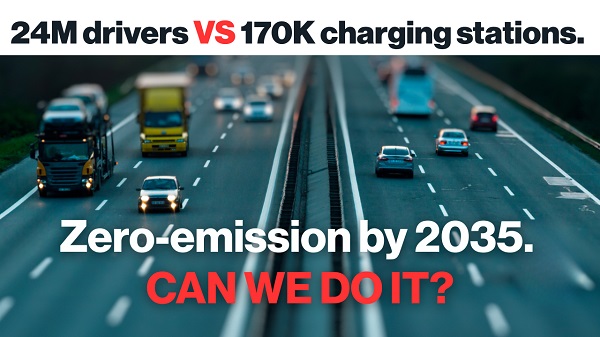
 Automotive1 day ago
Automotive1 day agoPower Struggle: Electric vehicles and reality
-
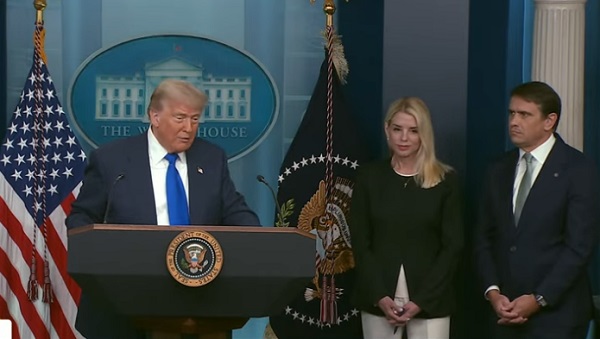
 Business1 day ago
Business1 day agoTrump on Canada tariff deadline: ‘We can do whatever we want’
-

 Business7 hours ago
Business7 hours agoCanada Caves: Carney ditches digital services tax after criticism from Trump
-

 Brownstone Institute2 days ago
Brownstone Institute2 days agoFDA Exposed: Hundreds of Drugs Approved without Proof They Work
-

 Crime7 hours ago
Crime7 hours agoSuspected ambush leaves two firefighters dead in Idaho
-
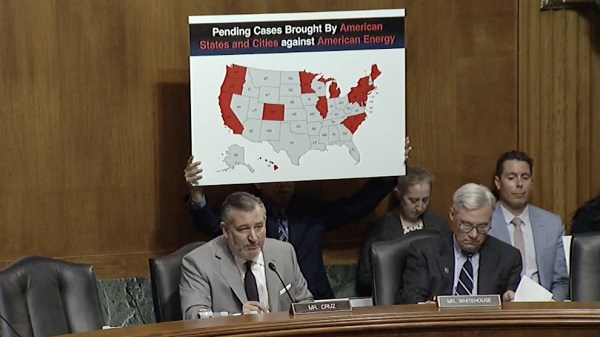
 Energy1 day ago
Energy1 day agoChina undermining American energy independence, report says





